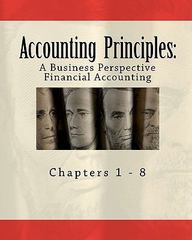Question
In lecture, The professor explained discrete compounding interest. Interest can also be compounded continuously. Here we explain the difference. Professor Gruber calculated future value asFV=P(1+r)
In lecture, The professor explained discrete compounding interest. Interest can also be compounded continuously. Here we explain the difference.
Professor Gruber calculated future value asFV=P(1+r)t, wherePis the principal,ris the interest rate,andt is the term of the contract (often in years). This formula can be generalized toFV=P(1+r/m)mt, wheremis the number of compounding periods per year (in lecture, this was 1). That is, after every compounding period, more interest accrues on both the principle and the previous accrued interest. This is discrete compounding.
Supposethatm becomes large. For example, the interest rate could be 10% per year, but compounded each minute. Future value rises asmincreases, but it rises at a diminishing rate. It turns out that asmgoes to infinity, future value is described by an exponential function,FV=Pert, whereeis the base of the natural logarithm. This is continuous compounding.
E1)Let's consider the problem that is the continuous-time analog to the above discrete-time problem. This is perhaps a more realistic problem.
Suppose interest is compounded continuously instead of discretely. You may again choose how many years to hold the case of wine before selling it - but now suppose you can sell at any time, not just at the integer years.
a)How many years should you hold the case of wine before selling it?
b)How much money will you receive for the case of wineat the time of its sale?
c)What is the net present value of that investment?
Step by Step Solution
There are 3 Steps involved in it
Step: 1

Get Instant Access to Expert-Tailored Solutions
See step-by-step solutions with expert insights and AI powered tools for academic success
Step: 2

Step: 3

Ace Your Homework with AI
Get the answers you need in no time with our AI-driven, step-by-step assistance
Get Started


